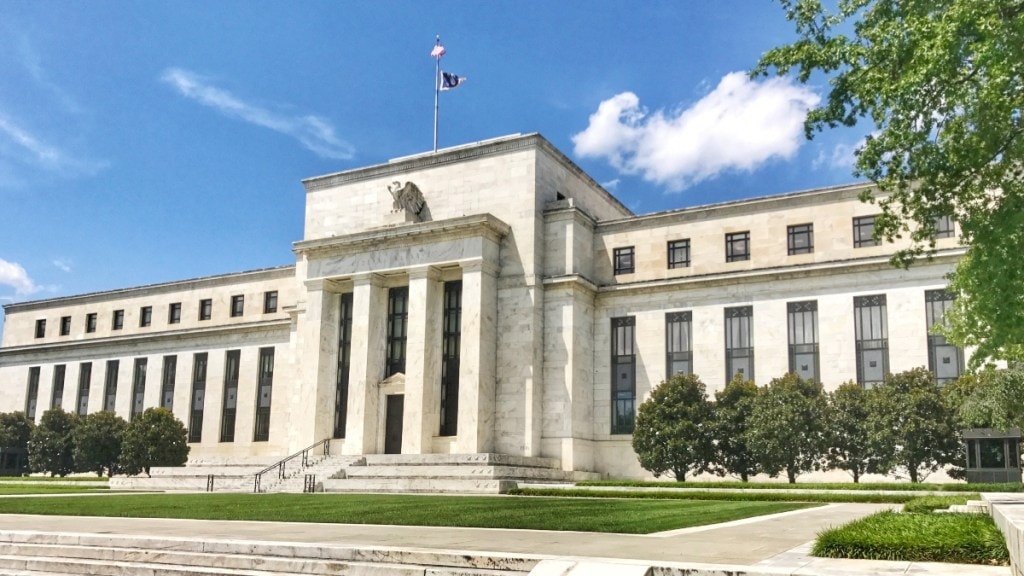The US central bank has revised its growth outlook downward, warning that President Donald Trump’s tariffs are “clearly” contributing to rising prices.
On Wednesday, the Federal Reserve released its latest projections for the world’s largest economy, maintaining interest rates at their current level while stating it would wait to assess the impact of the White House’s economic policies.
As expected, the Fed left its benchmark interest rate unchanged, holding steady at around 4.3%, where it has remained since December.
Fed Chairman Jerome Powell acknowledged that the economy still appeared strong, despite a notable decline in confidence and what he described as “remarkably high” uncertainty.
However, he cautioned that tariffs—taxes on imported goods—are likely to dampen economic growth and complicate the Fed’s efforts to maintain price stability, pointing to recent data that show an uptick in goods prices.
“Clearly some of it, a good part of it, is coming from tariffs,” he said, speaking after the Fed’s rate announcement on Wednesday.
“Progress is probably delayed for the time being,” he added.
Since assuming office in January, Trump has implemented a flurry of new tariffs while simultaneously pushing for deep cuts to taxes, regulations, and government spending.
Economists have consistently warned that such measures could cause prices to rise in the short term and increase uncertainty for businesses.
Analysts say those concerns have also contributed to a market downturn, with the S&P 500 falling 10% from February levels, returning to values last seen in September.
Trump has admitted there may be “a little disturbance” resulting from the tariffs but insists the policies will deliver long-term economic growth.
Inflation and fears of a downturn
This backdrop has made the Fed’s task more complex, as it works to keep inflation in check and ward off a potential economic slowdown.
Powell said the Fed is treating the inflationary impact of tariffs as a one-time price shock, but it is also preparing for possible consequences to overall growth.
Updated forecasts show policymakers now expect inflation to hit 2.7% by year-end, an increase from the 2.5% projected in December. Growth, meanwhile, is forecast to slow to 1.7%, down from the previous 2.1% estimate.
While interest rates were kept unchanged this week, the new projections indicate the Fed still anticipates cutting rates by the end of the year.
Additionally, the Fed announced it would slow the pace of asset sales, including government debt—an action that effectively provides further support to the economy.
“For the time being, the Fed is in wait and see mode, as it monitors whether the recent growth slowdown develops into something more serious,” said Whitney Watson, global co-head and co-chief investment officer of fixed income and liquidity solutions at Goldman Sachs Asset Management.
Following the Fed’s announcement, major US stock indexes moved higher, with the S&P 500 closing more than 1% up.
President Trump, who has previously criticized the Fed, did not immediately comment on the meeting.
However, Kevin Hassett, director of the National Economic Council, dismissed concerns about the tariffs’ impact.
“Chairman Powell is clear that if there were a tariff effect, it’s a transitory one,” he said, emphasizing the administration’s respect for the “independence of the Fed, as we all do within the White House.”
The Fed began raising borrowing costs significantly in 2022 in an effort to cool the economy and ease inflationary pressure. While inflation has since declined to 2.8% as of February, it remains above the Fed’s 2% target.
Recent surveys show that public sentiment has weakened, and inflation expectations have risen—developments that could complicate the central bank’s mission of price stability.
As households anticipate higher prices, they may accelerate spending, which in turn can drive businesses to raise prices, further fueling inflation.
“The problem the US faces is that inflation remains a primary risk and is showing signs of consumer expectations becoming unanchored from the 2% target,” said Lindsay James, investment strategist at Quilter.
“Leading indicators of demand may be slowing in the US, but inflation persists and risks spiralling if the proposed economic policies continue.”
Powell said the Fed is closely monitoring these surveys but has not yet seen worrying signs in the core economic data.
“We’re well-positioned to wait for further clarity and not in any hurry,” he said.

